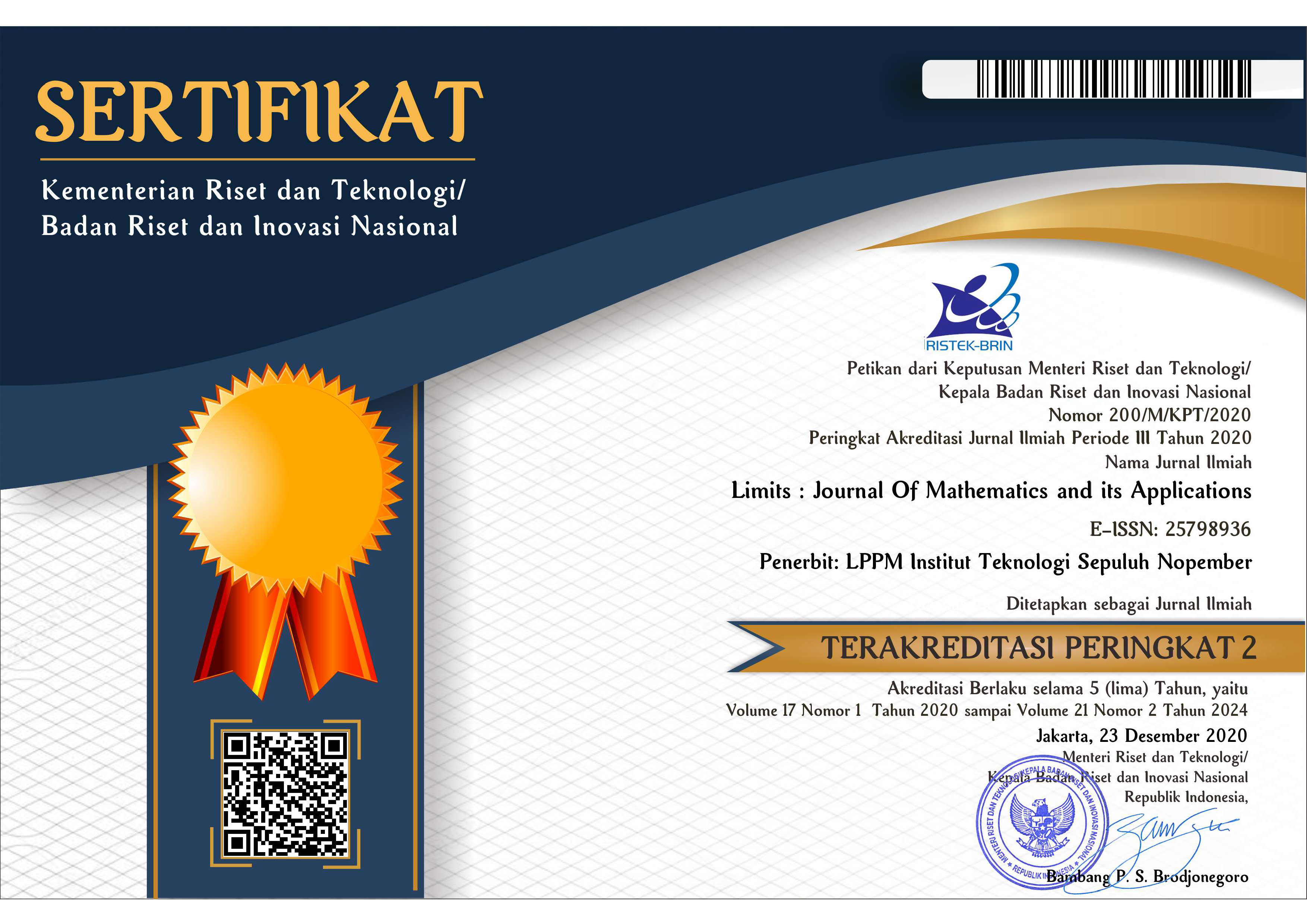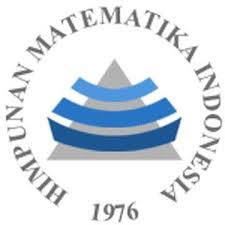Skema Staggered Grid pada Persamaan Air Dangkal untuk Simulasi Aliran di Sekitar Pulau
Abstract
Wake merupakan suatu pola gelombang pada permukaan air yang muncul akibat adanya pergerakan benda rigid. Pada penelitian ini, skema staggered grid orde dua digunakan untuk menyelesaikan persamaan air dangkal tak linier. Hasil yang didapat digunakan untuk mensimulasikan munculnya riak yang timbul akibat adanya arus yang menabrak pulau berbentuk lingkaran. Pada simulasi ini gaya-gaya luar yang diperhitungkan adalah gangguan angin, gaya gesek dengan dasar, dan efek turbulensi. Simulasi dilakukan dengan meniupkan angin pada ujunga kanal memanjang dengan sebuah pulau di dekat pangkalnya yang memicu aliran air. Untuk bilangan Reynold yang kecil, aliran air bersifat laminar dan membentuk pola halus di sekitar pulau. Bilangan Reynold merupakan perbandingan antara ketaklinieran dengan viskositas air. Untuk simulasi dengan bilangan Reynold yang besar, aliran menjadi tidak stabil dan memicu munculnya riak turbulen. Pusaran air tampak pada riak yang muncul di belakang pulau.
Keywords
Full Text:
PDFReferences
R. A. Khan and N. K. R. Kevlahan, “Data assimilation for the two-dimensional shallow water equations: Optimal initial conditions for tsunami modelling,” Ocean Model., vol. 174, no. March 2021, p. 102009, 2022, doi: 10.1016/j.ocemod.2022.102009.
D. Adytia, “Tsunami Simulation in Indonesia’s Areas Based on Shallow Water Equations and Finite Element Method Tsunami Simulation in Indonesia’s Areas,” Institut Teknologi Bandung, 2008.
J. G. Liu and W. H. Zhu, “Breather wave solutions for the generalized shallow water wave equation with variable coefficients in the atmosphere, rivers, lakes and oceans,” Comput. Math. with Appl., vol. 78, no. 3, pp. 848–856, 2019, doi: 10.1016/j.camwa.2019.03.008.
I. Magdalena, R. La’lang, and R. Mendoza, “Quantification of wave attenuation in mangroves in Manila Bay using nonlinear Shallow Water Equations,” Results Appl. Math., vol. 12, p. 100191, 2021, doi: 10.1016/j.rinam.2021.100191.
I. Magdalena, A. A. A. Hariz, M. Farid, and M. S. B. Kusuma, “Numerical studies using staggered finite volume for dam break flow with an obstacle through different geometries,” Results Appl. Math., vol. 12, p. 100193, 2021, doi: 10.1016/j.rinam.2021.100193.
S. Busto and M. Dumbser, “A staggered semi-implicit hybrid finite volume / finite element scheme for the shallow water equations at all Froude numbers,” Appl. Numer. Math., vol. 175, pp. 108–132, 2022, doi: 10.1016/j.apnum.2022.02.005.
I. P. Sari, “Penyelesaian Persamaan Gelombang Air Dangkal Dengan Beberapa Metode Numeris,” Universitas Sanata Dharma, 2016.
L. I. Nikmah, “Penyelesaian Numerik Persamaan Gelombang Air Dangkal Linier 1D Menggunakan Metode Volume Hingga,” Universitas Islam Negeri Maulana Malik Ibrahim, 2015.
K. Anastasiou and C. T. Chan, “Solution of the 2D shallow water equations using the high-resolution finite-volume method on unstructured meshes,” Int. J. Numer. Methods Fluids, vol. 24, pp. 1225–1245, 1997.
A. Duran, J. P. Vila, and R. Baraille, “Energy-stable staggered schemes for the Shallow Water equations,” J. Comput. Phys., vol. 401, p. 109051, 2020, doi: 10.1016/j.jcp.2019.109051.
M. Zijlema, “The role of the Rankine-Hugoniot relations in staggered finite difference schemes for the shallow water equations,” Comput. Fluids, vol. 192, 2019, doi: 10.1016/j.compfluid.2019.104274.
M. Ioriatti and M. Dumbser, “A posteriori sub-cell finite volume limiting of staggered semi-implicit discontinuous Galerkin schemes for the shallow water equations,” Appl. Numer. Math., vol. 135, pp. 443–480, 2019, doi: 10.1016/j.apnum.2018.08.018.
S. Armfield and R. Street, “A comparison of staggered and non-staggered grid Navier--Stokes solutions for the 8:1 cavity natural convection flow,” ANZIAM J., vol. 46, p. 918, 2005, doi: 10.21914/anziamj.v46i0.998.
N. A. Kampanis and J. A. Ekaterinaris, “A staggered grid, high-order accurate method for the incompressible Navier-Stokes equations,” J. Comput. Phys., vol. 215, no. 2, pp. 589–613, 2006, doi: 10.1016/j.jcp.2005.11.014.
M. Ishtiyak, N. Datta, Y. O. Venkatta, Lingesh, V. Gupta, and A. Attri, “Experimental vortex-induced vibration of spring mounted cylinder: Achieving Lock-In,” Proceedings of the 5h International Conference on Ship and Offshore Technology ICSOT, 2017.
J. Kampf, Ocean Modelling for Beginners Using Open-Source Software. London: Springer, 2009.
O. B. Fringer, S. W. Armfield, and R. L. Street, “Reducing numerical diffusion in interfacial gravity wave simulations,” Int. J. Numer. Methods Fluids, vol. 49, no. 3, pp. 301–329, 2005, doi: 10.1002/fld.993.
DOI: http://dx.doi.org/10.12962%2Flimits.v21i1.14620
Refbacks
- There are currently no refbacks.
Jumlah Kunjungan:

Limits: Journal Mathematics and its Aplications by Pusat Publikasi Ilmiah LPPM Institut Teknologi Sepuluh Nopember is licensed under a Creative Commons Attribution-ShareAlike 4.0 International License.
Based on a work at https://iptek.its.ac.id/index.php/limits.






